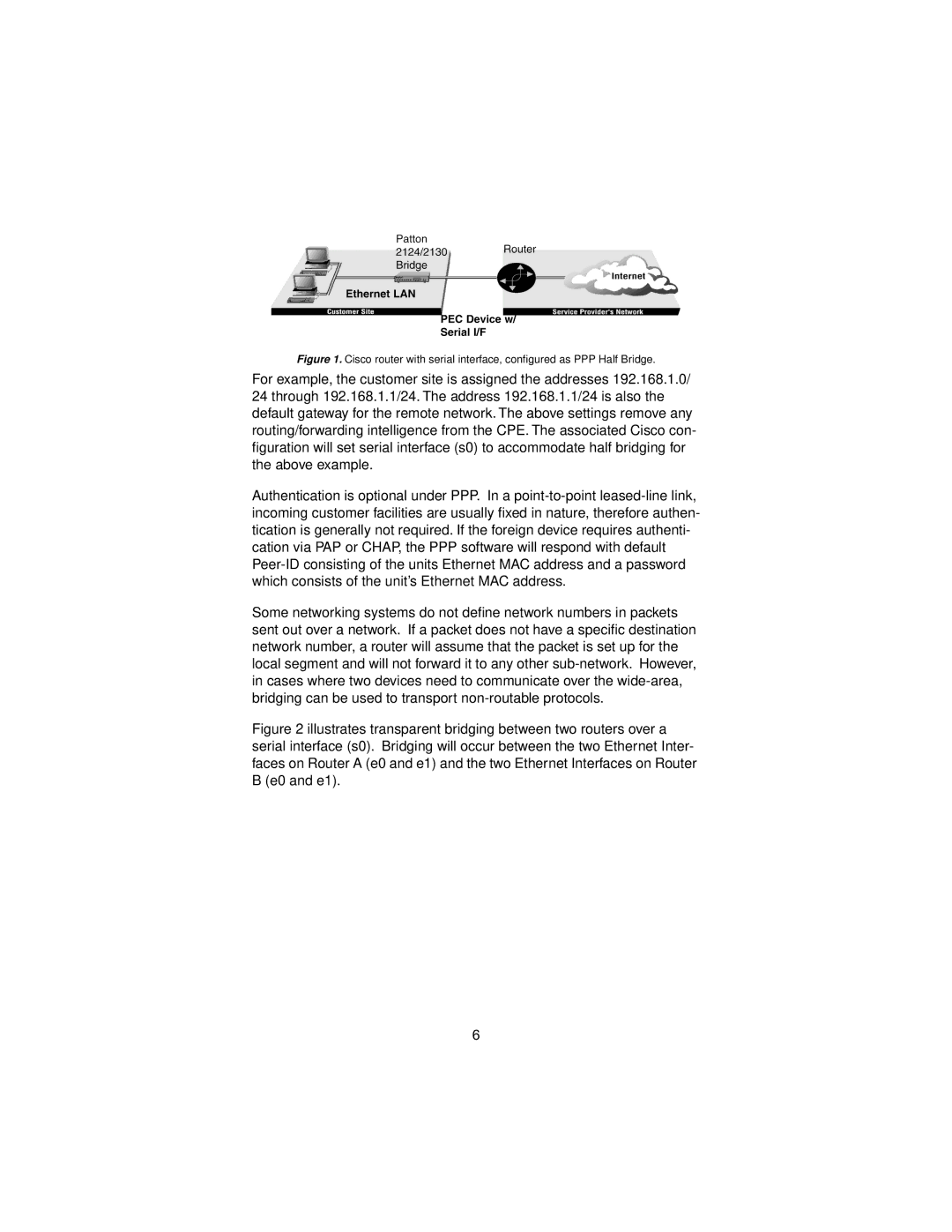2130, 2124 specifications
The Patton Electronics 2124 and 2130 are advanced solutions in the realm of networking, designed to enhance connectivity and support a variety of applications. Known for their robust performance, these devices are particularly useful in scenarios where reliable data transmission is essential, such as in telecommunications and enterprise network environments.The Patton 2124 model serves as a versatile serial to Ethernet converter, allowing for seamless integration of legacy serial devices into modern IP networks. One of its standout features is the ability to support both asynchronous and synchronous communication protocols, making it suitable for diverse equipment and applications. It supports data rates up to 115.2 Kbps, ensuring high-speed data transfer. Additionally, the 2124 incorporates advanced error detection and correction mechanisms, which enhance data integrity and reliability during transmission.
On the other hand, the Patton 2130 model focuses on VoIP (Voice over Internet Protocol) connectivity, facilitating the transition from traditional telephony systems to IP-based communication. This model supports multiple VoIP standards, including SIP (Session Initiation Protocol) and H.323, making it compatible with a wide range of VoIP applications and services. The 2130 also features high-definition voice codecs, which improve call quality, and a built-in echo cancellation function that minimizes audio distortion during calls.
Both models leverage Patton’s innovative SmartNode technology, which streamlines management and monitoring through web-based interfaces. This capability enables users to configure settings, monitor performance, and diagnose issues remotely, enhancing the overall efficiency of network operation. They are equipped with various interfaces including Ethernet ports, serial ports, and options for multi-port configurations, catering to different deployment scenarios.
Moreover, the rugged design of the 2124 and 2130 models ensures durability in demanding environments. They are built to withstand a range of temperatures and can be mounted in various configurations, adding flexibility to installation options. Power over Ethernet (PoE) support in these models simplifies installation by eliminating the need for separate power supplies.
In summary, the Patton Electronics 2124 and 2130 represent a blend of reliability, versatility, and cutting-edge technology, making them ideal choices for organizations embracing modern networking needs. Whether integrating legacy systems or enhancing VoIP capabilities, these devices are poised to meet the diverse requirements of today’s digital landscape.

